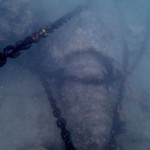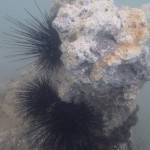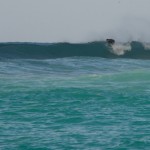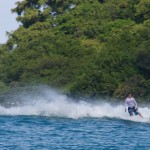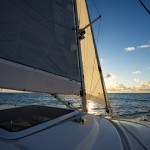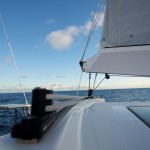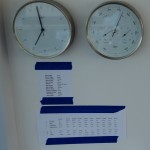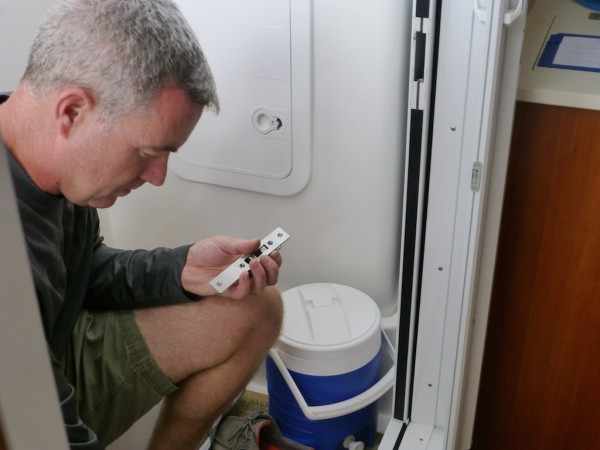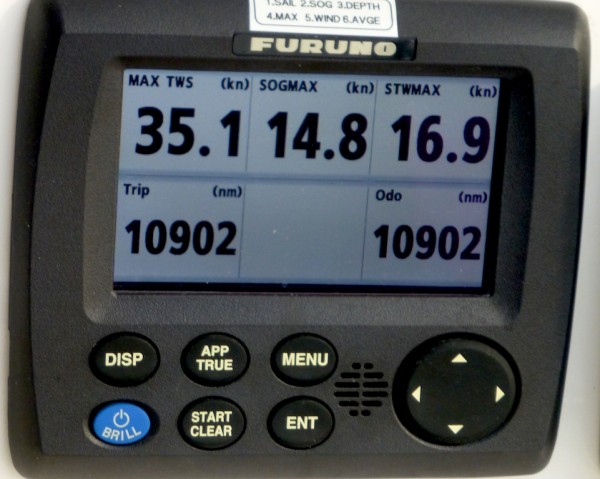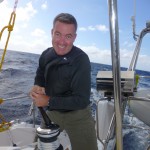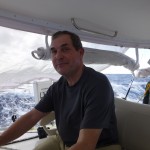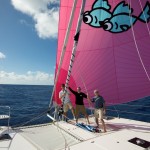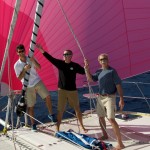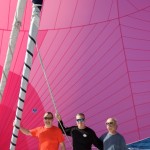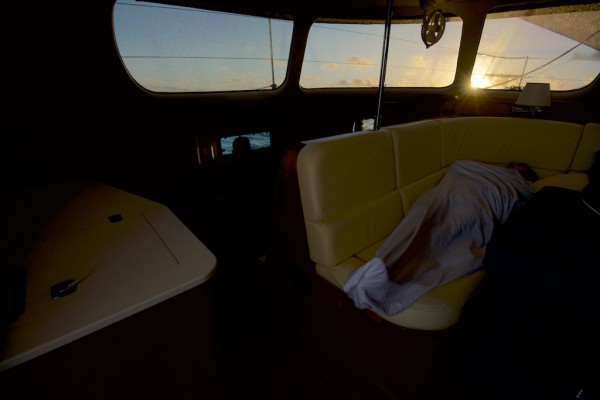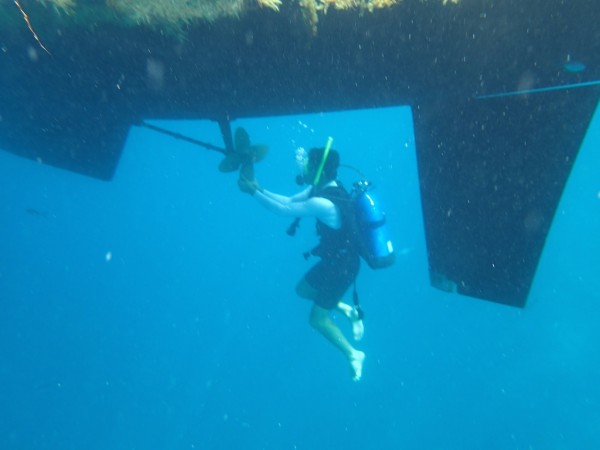We went to Cane Garden Bay to catch up with a friend and watch the Super Bowl. When we pulled into the bay, we had our first omen. Gail’s carefully researched sports bar was not in this Cane Garden Bay but 600 miles away in the Turks and Caicos. No problem; a substitute would be easy to find.
Our second omen arrived via dinghy. The captain of a 35 foot monohull asked me if I could free dive to 20 feet as his anchor was fouled. I said I would be over in 15 minutes with my SCUBA kit. Gail was not excited but we both feel you have to help a cruiser in need. She was concerned about me being trapped by the anchor chain as the boat shot free.
- After 20 minutes of work
- Note chain in lower right
I dove down 7 meters, following the anchor chain to the bottom. What I found was a shocking mess. There was an old barge sunk years ago by the British Navy during target practice. The remains were solid metal, including an exposed winch. The anchor chain had hooked, spun, stuck and twisted in over a dozen ways. When I first surveyed the problem, I thought the crew of “Marsha Claire” would have to call for a professional diver but, slowly, I made progress. The chain had pinned an old boat hook to the wreck. It took 5 minutes just to free this hazard. I kept checking my tank gauge and when it got close to 500 psi I surfaced. Gail and I went back to Two Fish where I donned my gloves and boots to protect me from the anemones and got a second tank. My second dive was more productive. As I freed the last twist, the load of the monohull pulled herself free and I swam aside to avoid the now tightening chain. The crew of the Marsha Claire were thankful.
After a delightful night aboard, we experienced our third omen, a swarm of small power boats from the USVI started to disgorge surfers. Like smoking and making fireworks, anchoring and surfing are two activities that should not be done in the same space. We watched the surfers for a bit and then I ferried Gail ashore in One Fish. She did a well timed leap to the dinghy dock, which was in the middle of the breaking surf. I tossed the laundry bag to Gail and she managed to grab it before the pounding surf took it away for a sand wash. I had been using a stern anchor to hold station during this fire drill. I realized it would not be safe to leave One Fish in this position, so I left Gail ashore. She was happy to be on terra firma with free wifi.
- Just getting on a wave
- Surfer in our anchorage
A couple of hours later, I came ashore via the paddle board (Blue Fish). It was a fairly uneventful trip. However, after lunch the waves had built and crossing the breaking surf was a challenge. I was face planted into the beach and held on to my specks while in the tumble cycle. Blue Fish was worse for the wear as she lost her fin. Without a fin, the paddle board travelled in a “leaving a bar after closing time” route. The serpentine path was not aided by the swell and breeze. Gail stayed ashore for the rest of the day to avoid the amusement park ride aboard Two Fish. Later, I was told that Cane Garden Bay can get so bad that mono hulls are fully on their sides. Unsuspecting charterers hoping for a relaxing one week vacation are trapped aboard because it is too rough to dinghy ashore. So they call the rental company and are taken off by a large motor boat and move to a hotel room. Fortunenatly we were in somewhat calmer conditions.
When sunset neared I went back ashore to pick up Gail. The dinghy dock had gotten much worse during the day and was now submerged in the breaking surf. We found an alternate dock that created a wave break when approached from one end.
Lessons learned when operating the dinghy in big swell:
1) Do not approach in a hurry. Spend the time to watch how your target performs in the big waves.
2) Lassoing dock cleats and stern anchors can calm your approach but also might just complicate the process.
3) Stay out of the surf.
4) Know how to use your reverse gear.
We got safely got back on board Two Fish. Gail had little sleep as the amusement park ride continued into the morning. That night would clearly have been more comfortable in our NYC apartment? Did I tell you about how Hurricane Sandy stopped Gail from sleeping? That is a story for another day but cruising is not always sundowners in paradise.
